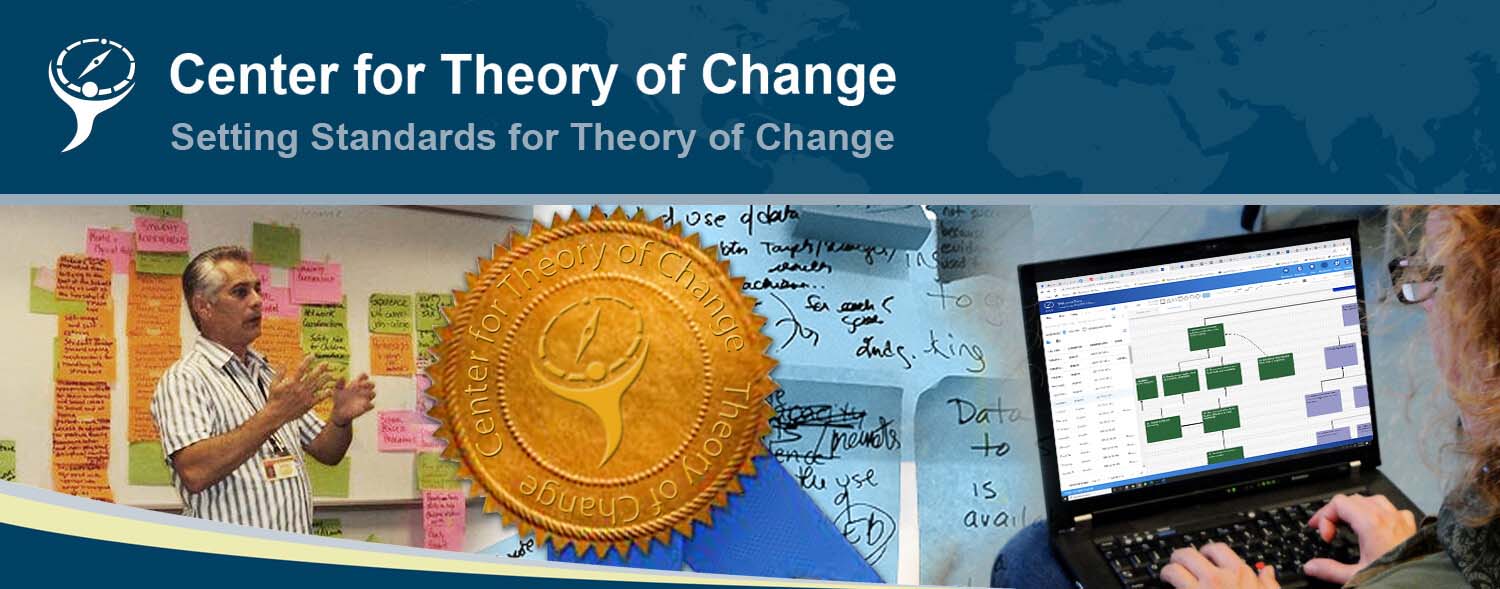Identifying interventions
After laying out the near complete change framework, we now focus on the role of interventions (those things that the program (or initiative) must do to bring about outcomes).
Interventions
 At this stage, note that some arrows have solid lines while others are dashed. The solid lines represent connections that will occur without the need for intervention. As long as the prior preconditions are met, these outcomes will be met. We represent interventions, an initiative’s program activities, as arrows with dashed lines for three reasons:
At this stage, note that some arrows have solid lines while others are dashed. The solid lines represent connections that will occur without the need for intervention. As long as the prior preconditions are met, these outcomes will be met. We represent interventions, an initiative’s program activities, as arrows with dashed lines for three reasons:
- We believe the outcomes those arrows lead to will not occur at a sufficient level without an intervention.
- They represent actions by the initiative and thus something that the initiative is responsible for
- Because these outcomes are control variables, they need to be measured to evaluate the interventions’ effectiveness.
By identifying interventions, the stakeholders explain how their work is going to change the community. Until this point, the change framework has been like a gumbo recipe without directions, a literal listing of intermediate ingredients—roux, shrimp, onions, okra, etc. But until this point our “recipe” hasn’t explained explain how these components are used and put together, i.e., how to make roux by browning flour in hot oil; when to add the shrimp (previously peeled and cleaned), etc. The interventions explain what the stakeholders are going to do to achieve their desired outcomes. Hence the first intervention (1), an outreach campaign, is of course necessary to publicize the program. While this example seems obvious, the point is again to be clear about what the stakeholders expect the initiative to do—something that is often taken for granted, but never clearly or consistently expressed.
We also identify each intervention with boxed numbers. Often a dashed interventions arrow will have multiple boxes because the outcome requires multiple activities for it to happen.
Spot Checking
At every stage of the TOC process, there is a need for stakeholders to question whether new revelations reveal an inconsistency in their logic: Does specifying interventions highlight an important gap in the outcomes framework? Do any of the assumptions suggest an additional change pathway (with additional early and intermediate outcomes)? Stakeholders should ask themselves if what they are creating “makes sense” by thinking about whether their map reflects a plausible theory, and whether the set of interventions are actually feasible for them to implement, given the resources they have at their disposal.
